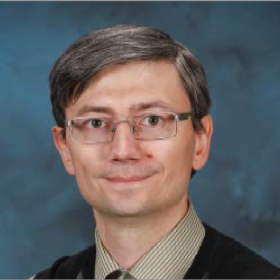
Location: EER 3.646 or by Zoom: 828 685 7838
Sponsor: Department of Energy (DOE) Energy Frontier Research Center (EFRC) Materials for Water and Energy Systems (M-WET)
Title: "Resolving Molten Salt Structures with Ab Initio Molecular Dynamics-Based Raman Spectral Simulations"
Abstract
Uncovering the atomic-scale organization of molten salts has proven elusive. Raman spectroscopy, while widely used, frequently produces spectra that can be interpreted in different ways, obscuring clear connections between spectral features and structural motifs. To overcome these limitations, we employ density-functional-theory–based ab initio molecular dynamics (AIMD) coupled with rigorous Raman spectral simulations, enabling direct and quantitative comparison with experiment. I will begin with case studies on divalent, trivalent, and tetravalent chlorides and fluorides, where AIMD based Raman simulations resolve spectral ambiguities and provide structural insight into metal ion coordination in molten salts. I will then proceed to molten ThCl₄, as a deeper case study. Here, extended sampling is essential, and we therefore incorporate machine-learned interatomic potentials to accelerate AIMD, reaching nanosecond timescales required for converged spectra. The resulting structural model reveals a percolating Th–Cl network dominated by sevenfold coordination, with terminal Th–Cl vibrations giving rise to the principal band and edge- and face-sharing motifs generating distinct lower frequency shoulder. Careful benchmarking highlights the sensitivity of simulated spectra to dispersion treatment and semicore representation, with accurate reproduction achieved only when Th 5d¹⁰ states are explicitly included. Raman spectroscopy, combined with first-principles simulations and machine learning, provides unambiguous atomic-scale structures that enable predictive modeling of thermophysical and transport properties critical for molten salt reactor performance.
Bio
Vyacheslav S. Bryantsev leads the Chemical Separations Group at Oak Ridge National Laboratory, where his team integrates expertise in chemical separations, radiochemistry, organic synthesis, materials science, physical chemistry, and computational modeling.
His research interests span data science and artificial intelligence for chemistry and materials science, heavy-element and critical-material separations, molten salt chemistry, and the design of advanced materials for energy applications. He investigates molecular recognition and ion binding in solution and the solid state, adsorption at mineral surfaces, and direct air capture, with an emphasis on connecting atomic-scale processes to macroscopic performance. Dr. Bryantsev applies a broad suite of computational approaches—spanning quantum chemistry, molecular dynamics, and machine-learning–accelerated simulations—integrated with spectroscopy to predict thermodynamics, reaction kinetics, and guide the rational design of new materials.

